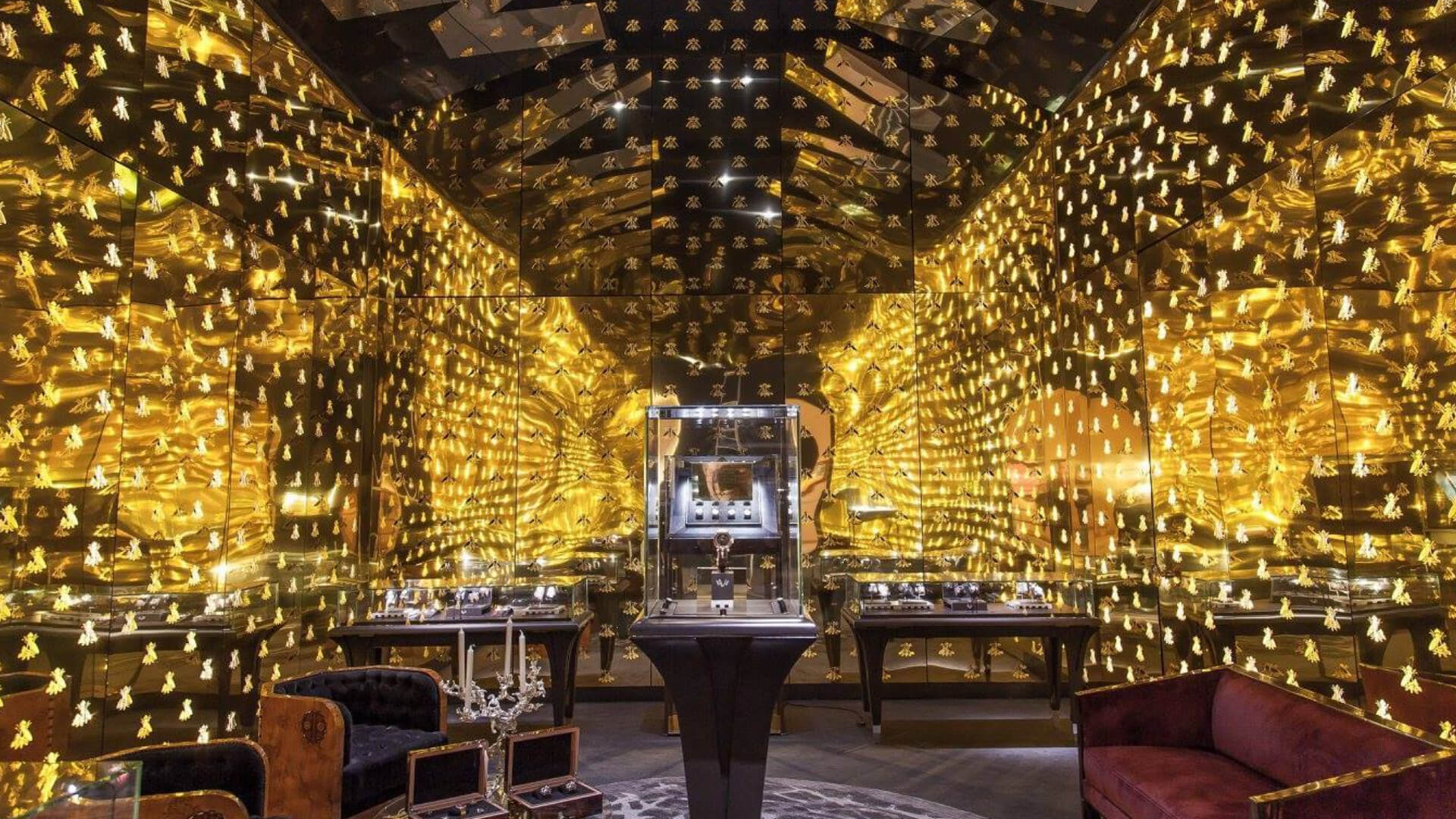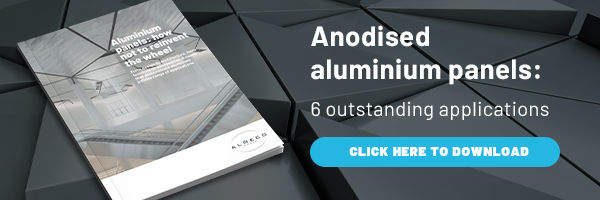The desire of every designer in the field of aluminium interior design is to be able to reproduce the specificities of nature: the shades and the veins of rocks and minerals, the gradations and transparency of the water, the marked notes of colour of the flora and fauna, the effect of natural light. The chromatic and material characteristics of what makes up our planet are difficult to imitate, though: they are unique and for this reason they are considered extraordinary in the context of aluminium interior design.
Is aluminium good for interior design?
Aluminium stands as a cornerstone in the realm of interior design, especially when the objective is to echo the intricate beauty and diversity found in nature. Its inherent qualities such as lightness, strength, and exceptional flexibility, coupled with its sustainability as a fully recyclable material, render it unparalleled in the design world.
For designers who strive to encapsulate the raw essence of the natural world within interior spaces, aluminium offers a medium through they can artistically represent the most intricate natural details.
The process of anodization further amplifies aluminium’s versatility, allowing for a broad spectrum of finishes and colours that can mimic the delicate nuances of natural elements.
From the subtle textures of stone to the lustrous sheen of metals, aluminium can be transformed to reflect the world’s diverse palette, making it an extraordinary choice for interior design.
Its ability to adapt to various aesthetic demands, while maintaining durability and environmental friendliness, positions aluminium not just as a good, but as an indispensable resource in the pursuit of design that harmonises with the natural world in the field of aluminium interior design.
What is aluminium used for in interior design?
Aluminium’s role in aluminium interior design is widely acclaimed for its dynamic range and innovative applications, pushing the limits of traditional design to embrace new, creative possibilities.
This robust yet lightweight material is harnessed to forge sleek, modern furniture pieces, including chairs, tables, and shelving units, that offer a modern aesthetic effortlessly harmonising with diverse design motifs in aluminium interior design. The malleable nature of aluminium allows for its use in lighting fixtures, where its reflective qualities not only boost light but also add a distinctive visual charm to aluminium interior design spaces.
Aluminium’s capacity to simulate a variety of textures and hues enables the creation of wall panels and decorative accents that introduce depth and personality to any space, enhancing the aluminium interior design aesthetic. Its corrosion-resistant properties and ease of care qualify it as an ideal option for kitchen backsplashes and cabinetry in aluminium interior design, blending practicality with modern elegance.
Additionally, aluminium’s application in frames for doors and windows enhances structural robustness while promoting energy efficiency through superior insulation in aluminium interior design projects. Ultimately, the incorporation of aluminium in interior design is a testament to its fusion of aesthetic appeal, enduring quality, and ecological sustainability, solidifying its status as an essential component in contemporary aluminium interior design endeavours.
Aluminium composite panel interior design
Expanding the horizon of aluminium in interior design, Aluminium Composite Panels (ACPs) have emerged as a revolutionary and versatile solution, further enriching the realm of aluminium interior design.
These panels, known for their durability, lightweight nature, and excellent flatness, offer a canvas for endless creative expression. ACPs can be used to create feature walls, false ceilings, and other architectural elements that demand a sleek, sophisticated finish.
The ability to mimic other materials like wood, stone, and metal, coupled with a vast array of finishes and colours, makes aluminium composite panels a favourite among designers seeking to inject modernity and seamless elegance into spaces. Their ease of installation and maintenance is an added advantage, allowing for the transformation of interiors without the complexities associated with traditional materials.
Whether it’s creating a vibrant focal point or achieving a minimalist aesthetic, aluminium composite panels offer a sustainable and aesthetically pleasing option for pushing the boundaries of aluminium interior design.
How aluminium in interior design helps reproduce every possible effect
In the world of interior design, every project always begins with an in-depth analysis of both materials and finishes. There are many alternatives that are able to fulfil the extravagant choices of artists and designers, but only one material is able to amply satisfy numerous requirements at the same time: aluminium. Lightness, strength, flexibility and sustainability are the fundamental characteristics of a totally recyclable and exceptionally durable material such as aluminium. The potential for use and its applications are practically infinite, thanks to the intrinsic qualities of this metal. And more and more architects are choosing to work with aluminium in their interior design projects to create objects, furnishings, accessories and complements.
In this regard, the Almeco Group has been focusing for years on the production of anodised aluminium that responds in an excellent way to the needs of architecture and interior design. There are numerous applications, thanks to the particular aesthetic connotations that make it the ideal material for new furnishing creations and to give character to spaces.
In particular, bandoxaldecor® is the range of coloured anodised aluminium surfaces designed specifically for the decorative sector.
Aluminium in interior design: bandoxaldecor® proves that creativity has no limits
Creativity has no limits with bandoxaldecor®. The range of colours is almost infinite and its development never stops: following the fashion and trends most requested by the world of design, Almeco can create ad hoc warm or cold colours, metallic or opaque shades, according to liking and request. It is thus possible to imitate even the most unique peculiarities of nature, coming to faithfully reproduce what natural elements have created over time. But not only.
Starting from 50 standard colours and four different types of finishes (among mirror, brushed, textured and embossed), Almeco, thanks to an advanced technology and innovative processes, is able to create practically infinite customised surfaces. For example, in the bandoxaldecor® range a particular tint was created by carefully analysing the market trends and reproducing the pink shade of a cover created for the first time by a very popular mobile phone brand: the Gran Brilliant Rose 502. This shows that it is possible to take a cue from an industrial or naturally occurring object to perfectly imitate its colour and reproduce it on the aluminium surface.
Anodisation: benefits and possibilities
Thanks to the anodising process carried out before transformation, Almeco is able to obtain a very homogeneous surface, with perfect finishes and colours. The coloured pigments, in fact, fill the spaces of the anodising becoming one with the substrate. This is why it is possible, thanks to bandoxaldecor®, to replicate many of the metals present in the world. Aluminium, lighter and easier to work with, thus acquires the appearance of steel, titanium, gold and silver, but also of copper, bronze, tin or brass. A real rainbow of colors and finishes, able to meet the most extreme needs in the world of interior design.
Let’s boost the imagination, then! To decorate and give character to the most different spaces of residences, hotels, shops, restaurants, showrooms without limits to creativity.
Do you want to find out more about other outstanding applications of anodised aluminium? Download the Whitepaper Now >>>

